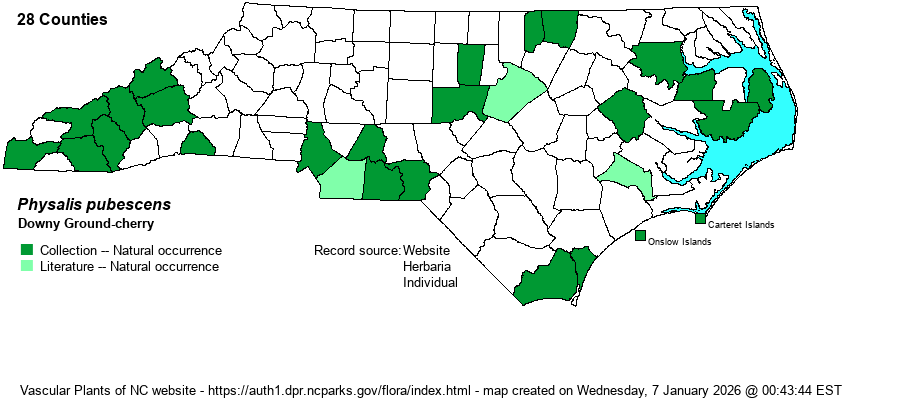| Author | L. | |
| Distribution | Widely scattered over the state, but mainly in the southern half of the Mountains, the lower Piedmont, and parts of the Coastal Plain. The species is obviously under-collected or overlooked, based on the fragmented collection records. However, the lack of known records for the northern half of the Mountains and the northwestern 2/3rd of the Piedmont may be a region of absence or great scarcity, though it is found in several counties in southwestern VA.
This is a primarily Midwestern species, though widely occurring in the East. It ranges from VT to MN, and south to southern FL and southern TX. | |
| Abundance | Not well collected, but seemingly rare to uncommon, though not scarce in the southern Mountains. Based on the overall range, it could be found in most counties of the state, eventually. | |
| Habitat | This species has no particular habitats and grows in a variety of openings and edges, generally where somewhat dry. It even occurs on sandy soils of coastal islands. Weakley (2024) simply says "Disturbed areas". | |
| Phenology | Blooms from July to September, and fruits from August to October. | |
| Identification | This is almost the prototypical Physalis, growing to about 1.5 feet tall, with obviously hispid stems. The leaves are clearly green, as opposed to hoary gray-green in the related P. grisea. The leaves are ovate, about 2 inches long and 1.5 inches wide, with wavy margins or with shallowly lobed margins. This species has blue anthers, whereas P. virginiana and P. heterophylla have yellow anthers. Also, this species has short calyx lobes, barely 1/4-inch long; those other species have the lobes longer than 1/4-inch. Even so, you may have trouble separating this species from several others, and the fact that collection records are so spotty across the state strongly suggests that botanists are overlooking it. | |
| Taxonomic Comments | RAB (1968) included two other taxa -- grisea and glabra -- with this one into the large (sensu latu) P. pubescens, naming this taxon as P. pubescens var. pubescens. Most references have had these three separated as good species, grisea now as P. grisea and glabra now as P. cordata.
| |
| Other Common Name(s) | Husk Tomato, Low Ground-cherry | |
| State Rank | S3 | |
| Global Rank | G5 | |
| State Status | | |
| US Status | | |
| USACE-agcp | UPL link |
| USACE-emp | FACU link |

